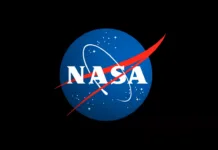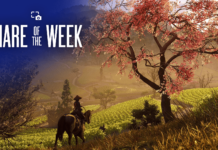An Iconic Moment: Alamosaurus and the 2024 Solar Eclipse
On April 6, 2024, an unusual yet captivating sight could be observed outside The Children’s Museum of Indianapolis. An adult Alamosaurus, a life-sized dinosaur model, was adorned with a pair of eclipse glasses, preparing for a celestial event that fascinated millions across North America and beyond. This symbolic display was a prelude to one of the most anticipated astronomical events – the total solar eclipse of 2024.
The Path of Totality: A Journey Across Continents
Two days following the Alamosaurus’s intriguing display, on April 8, 2024, the total solar eclipse made its majestic journey across the North American continent. Its path of totality, the swath of Earth where the moon completely covers the sun, began on Mexico’s Pacific coast. From there, it traveled northeastward, crossing into the United States and continuing across the Atlantic Ocean, reaching the shores of Newfoundland, Canada.
This path provided a unique opportunity for millions of people to experience the awe-inspiring sight of a total solar eclipse. During this event, the day briefly turned into night as the moon obscured the sun, leaving only the sun’s corona visible. The totality phase, although brief, offered a once-in-a-lifetime experience for many onlookers.
A Partial Eclipse: Extending the Experience
While the total eclipse was a spectacle reserved for those fortunate enough to be in the path of totality, the event was far from limited to a small geographical area. A partial solar eclipse was visible across the entire North American continent, providing a wider audience with the chance to witness this celestial phenomenon. The partial eclipse extended into parts of Central America and Europe, allowing millions more to partake in this rare astronomical event.
Capturing the Moment: NASA’s Top Photography
The significance and fascination of the 2024 solar eclipse were not lost on photographers, particularly those at NASA Headquarters. The photo of the Alamosaurus sporting eclipse glasses was selected by NASA’s photo team as one of the best images of the year. This choice highlights not just the creativity involved in capturing the event but also the widespread excitement it generated.
For those interested in exploring more of the year’s top photographic moments, NASA has curated a collection of the top 100 photos from 2024 on Flickr. This selection showcases a variety of moments that captured the public’s imagination over the past year, reflecting both the beauty and the scientific significance of events like the solar eclipse.
Understanding the Phenomenon: Total and Partial Eclipses
For those unfamiliar with the concepts of total and partial solar eclipses, a brief explanation can provide clarity. A total solar eclipse occurs when the moon passes directly between the Earth and the sun, completely covering the sun for a brief period. This results in the darkening of the sky, a drop in temperature, and the appearance of the sun’s corona, which is normally obscured by the sun’s bright light.
In contrast, a partial solar eclipse occurs when only a portion of the sun is obscured by the moon. This results in a less dramatic change in lighting but still offers a remarkable view as the sun appears to have a "bite" taken out of it.
Safety First: Viewing Eclipses
Viewing solar eclipses, whether total or partial, requires special precautions to protect one’s eyesight. It is crucial to use proper eclipse glasses, which are designed to filter out the harmful rays of the sun, allowing for safe viewing. Regular sunglasses are not sufficient for this purpose and can lead to eye damage. For those interested in more information about eclipse viewing safety, NASA provides comprehensive guidelines on their website.
A Community Experience: Reactions and Reflections
The 2024 solar eclipse not only provided an opportunity for scientific observation but also served as a communal experience that brought people together in wonder. Across North America and beyond, communities organized viewing events, schools incorporated the eclipse into educational activities, and social media buzzed with images and reactions.
From amateur astronomers to casual sky gazers, the eclipse fostered a sense of connection and shared experience. Many described the event as humbling, a reminder of the vastness of the universe and our place within it. For some, it sparked a newfound interest in astronomy and a desire to learn more about the celestial mechanics that make such events possible.
Looking Ahead: Future Eclipses
While the 2024 solar eclipse is now part of the past, it serves as a reminder of the celestial wonders that await us in the future. Astronomers and enthusiasts alike are already looking forward to upcoming eclipses, each with its own unique path and opportunities for observation.
For those eager to plan their next eclipse adventure, resources are available to track future solar and lunar eclipses, providing information on their paths, timing, and visibility. These events continue to captivate the imagination and inspire curiosity about the universe we inhabit.
Conclusion: A Celestial Celebration
The 2024 solar eclipse was more than just an astronomical event; it was a celebration of science, community, and the natural world. From the playful image of an Alamosaurus in eclipse glasses to the stunning views of totality, it captured the hearts and minds of people across continents. As we look to the future, the lessons and memories of this eclipse will continue to inspire and educate, reminding us of the beauty and wonder that lies beyond our everyday horizon.
For more Information, Refer to this article.


































